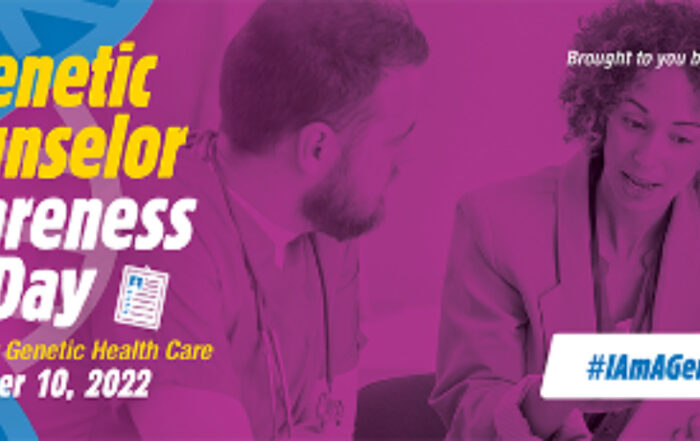Diabetes Runs in the Family?
November 20, 2022

Does diabetes run in the family? Some risks to prevent diabetes are more in your control than others.
Most food in our diet is broken down by the body into sugars, fats, and protein building blocks. The pancreas is a digestive organ that releases a hormone called insulin if the body detects high levels of blood sugar, which is a normal event after a meal. Insulin helps the sugar in the blood enter individual cells, like a key opening a lock. There can be different forms of diabetes depending on whether the body makes too little insulin (fewer keys) or if the cell does recognize the insulin (the lock does not work).
Diabetes is a disease where the body cannot use sugar from food correctly. Meaning the amount of sugar in the blood stays higher than normal. A short time period of high blood sugar usually doesn’t make the body feel any different, but having high blood sugar for a long time can cause kidney damage, nerve damage, or blindness. Diabetes is the condition of having chronic high blood sugar.
Complex causes of diabetes
The current understanding of how diabetes develops suggests that everyone has some risk of developing diabetes. That risk most often depends on genetics and lifestyle, called a multifactorial risk. One way to think about a multifactorial risk is to imagine a glass of water that is partially full and if the glass is filled until it overflows, that is when someone develops disease symptoms. Everyone is born with the glass partially filled due to genetics, called a genetic predisposition. Some families have very little filled at birth (low genetic risk) and other families have an almost full glass at birth (high genetic risk), but most families are somewhere in between. Then, lifestyle and aging continue to fill the glass throughout someone’s life. Poor diet, lack of exercise, and gaining weight fill the glass more quickly. If someone was born with a high genetic risk, they are far more likely to have a glass that overflows even if they have an extremely healthy lifestyle, but a healthy lifestyle will slow the progression of disease symptoms and help symptoms be less severe. For others with a moderate or low genetic risk, a healthy lifestyle can help prevent the glass from being filled to the top and prevent all disease symptoms.
Our genes are the instructions our body uses to grow and function, including everything from our eye color to digesting food. We each received one set of genes from each parent. This means we share the most genes with our parents, siblings, or children and we share fewer genes with our grandparents, aunts, uncles, and so on. Some genes have a big effect and some genes have small effects. Most families with increased genetic risk for diabetes share multiple genes with small effects. Very rare forms of inherited diabetes are caused by a single gene with big effects not functioning correctly, called single-gene disorders or monogenic diabetes.
Type 1 Diabetes:
Type 1 diabetes is caused by the body’s immune system attacking the pancreas. As the pancreas becomes damaged, it produces less and less insulin. Without insulin, the body’s cells do not allow sugar to enter the blood. Individuals with type 1 diabetes are dependent on insulin injections to control their blood sugar and prevent tissue or organ damage from chronic high blood sugar but also can have severe health effects from low blood sugar. Most affected individuals develop symptoms in childhood or adolescence and blood tests can confirm the pancreas is being attacked by the immune system.
For most individuals with type 1 diabetes, the risk their children will develop type 1 diabetes is about 3-6% (3 to 6 children out of 100 will develop type 1 diabetes). If both parents have type 1 diabetes, the risk their children will develop type 1 diabetes may be as high as 25% (25 out of 100).
Type 2 diabetes:
Type 2 diabetes is more common than type 1 and is caused by the body’s cells no longer responding to insulin or the pancreas not producing enough insulin. These individuals have high blood sugar but no signs their immune system is attacking the pancreas. Most affected individuals are overweight and are diagnosed in adulthood. Type 2 diabetes may be treated with pills or may also require insulin injections, or may be treated by losing weight and improving lifestyle without requiring medication.
Pregnant women who have type 2 diabetes are watched very closely as high blood sugar for long periods of time during pregnancy can be harmful to a developing fetus. Uncontrolled diabetes during pregnancy can increase risk for birth defects, such as kidney abnormalities or spina bifida, and can also cause the fetus to grow too large for vaginal delivery. Taking medication for diabetes and making diet adjustments as advised during pregnancy can help protect both the mother and the pregnancy.
Children of individuals with type 2 diabetes may have a 10% (10 out of 100) risk of also developing type 2 diabetes due to shared genetic predisposition and learned lifestyle. But, the great news is that for many parents, risks for their children to develop diabetes can be reduced by living a healthy lifestyle. They can set examples of good habits for their children while treating their own diabetes at the same time!
Gestational diabetes mellitus:
Type 2 diabetes during pregnancy may be a temporary condition resulting in high blood sugar caused by pregnancy hormones or maybe a pre-existing condition recognized for the first time during routine pregnancy care. Treatment is very similar to type 2 diabetes with diet and lifestyle, medications, and sometimes insulin injections. Controlling blood sugar during pregnancy is important to lower the risks of birth defects and birth complications.
If an individual has gestational diabetes, they are more likely to develop type 2 diabetes after pregnancy and should alert their primary care physician if they develop gestational diabetes. Gestational diabetes can occur in any pregnancy but is more likely to occur if a previous pregnancy developed gestational diabetes.
Genetic testing:
Rarely, an individual with type 1 or type 2 diabetes developed a disease due to a single non-functioning gene. Around 1-5% of individuals with diabetes inherited a single-gene cause of their diabetes and have a 50% risk of passing the non-functioning gene on to each of their children.
If someone with type 2 diabetes has any of the following, they should ask their diabetes specialist about genetic testing: type 2 diabetes diagnosed before 35 years old without being obese at the time of diagnosis, diabetes as a newborn, if they had hearing or vision loss in childhood, if they had kidney defects at birth or other birth defects, or if multiple family members have been diagnosed with diabetes without being overweight at the time of diagnosis. Individuals with a single gene cause of diabetes may respond better to certain treatments that would not otherwise be prescribed without a genetic diagnosis.
A genetic diagnosis also allows for prenatal diagnostic testing during an ongoing pregnancy by chorionic villus sampling (CVS) or amniocentesis to confirm if a single gene diabetes condition was inherited by a pregnancy. Prenatal diagnostic procedures carry a low risk of miscarriage, so each patient must consider the personal risks and benefits of a prenatal genetic diagnosis. Knowing a genetic diagnosis can also allow for preimplantation genetic testing for most couples. This is an extra step during IVF where a small sample from lab-fertilized embryos is sent to test for a known genetic condition and embryos that did not inherit the genetic condition are transferred to achieve pregnancy. IVF is expensive and a medically complex process, which may limit availability to some families.
Healthy lifestyle:
We hear it again and again: “Live a healthy lifestyle” and images of replacing that burger and fries with a salad or maybe going jogging comes to mind. While increasing the number of whole foods, especially plant-based foods, in your diet and increasing your activity levels are wonderful goals – making changes towards healthy living is NOT an “all or nothing” effort. Improvement, rather than drastic change, is how most of us are going to be able to balance healthy habits while still enjoying day-to-day life.
The American Diabetes Association has many suggestions on how to prevent diabetes if you know you are at risk due to family history, and also tips for managing diabetes after a diagnosis.
To review, we all have some risk of developing diabetes. Most of us can lower the chance of disease by eating healthy, exercising regularly, and keeping a healthy body weight. If you are pregnant and have been diagnosed with gestational diabetes or if you had diabetes prior to pregnancy, our Registered Nurse, Gloria, is an amazing resource for helping make diet adjustments and discuss tracking blood sugar levels.




